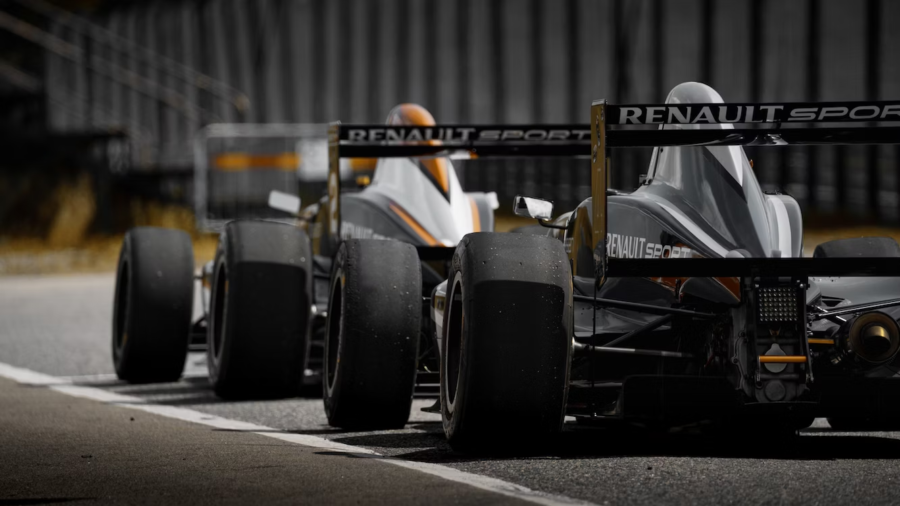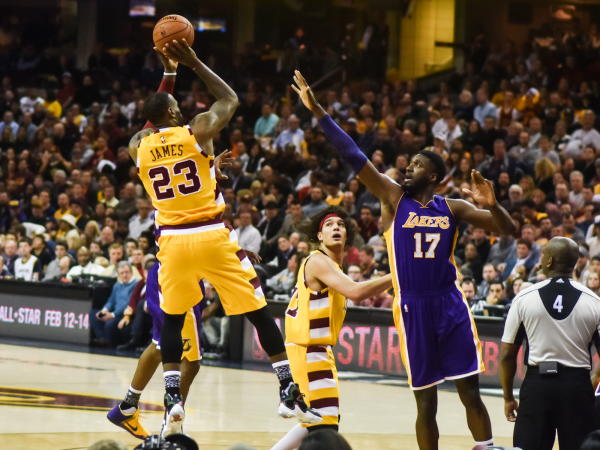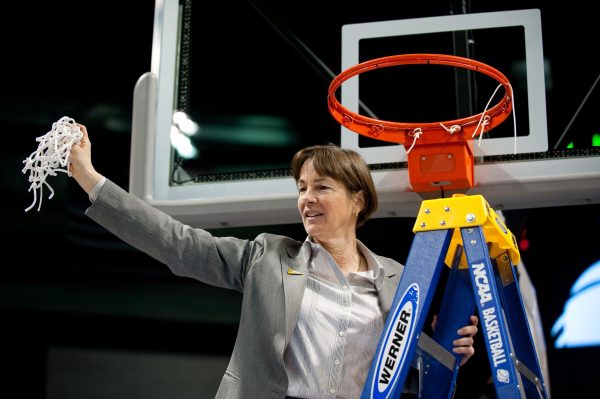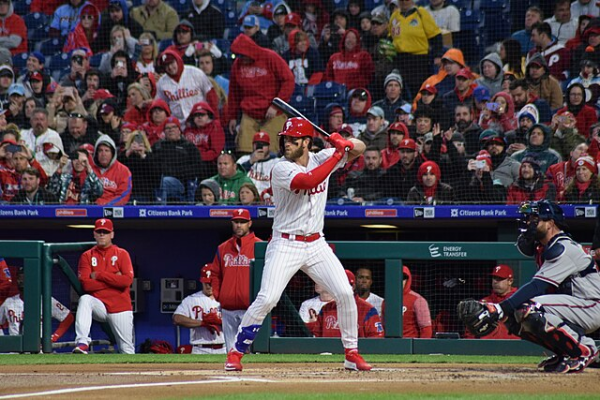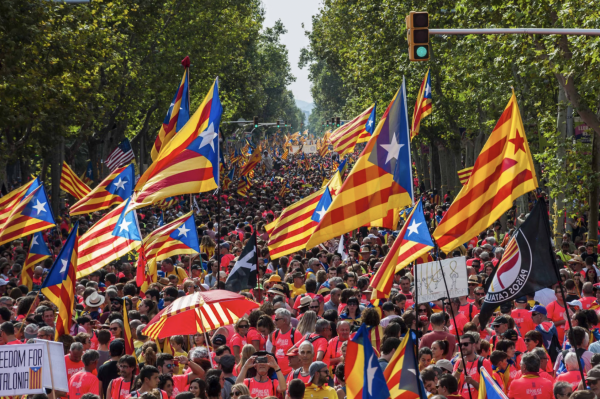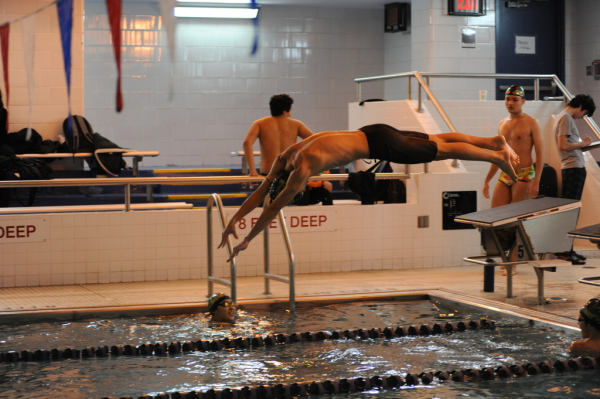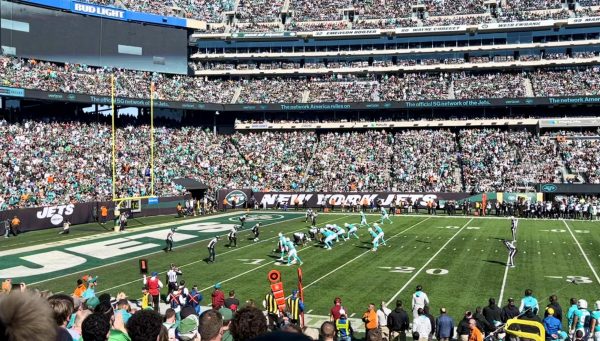The Appeal of Formula One, the International Auto Racing Sport
Sundays are now made for racing.
Whether due to the foreign design of the cars, the popularity of drivers, or the international appeal, Formula 1 is slowly growing in popularity across the world.
It’s early Sunday morning and the television is switched onto the ESPN channel. The camera flashes out to crowds, nearly all of them wearing their flags and cheering enthusiastically in the stands. There’s a sense of anticipation in the air, everyone eagerly waiting for a match to start. The camera switches from the pit to where the crew is rolling out, helping the drivers get situated in the cars aligned upon the starting line. A thumbs up is given and the crew moves away: it’s time. The camera shows flashing traffic lights. Red. Yellow.
A slight pause.
Green. The race has officially begun.
I grew up on the Disney Pixar’s Cars movie trilogy along with the Fast and Furious movies; these franchises grew my interest in racing from a young age. Whether it was racing games at the arcade, playing my brother’s video games, or go-karting, racing became an adrenaline thrill for me. However, it was TikTok that introduced me to the world of Formula One. And I wasn’t the only one.
TikTok has been a global sensation since its release in 2016. Whether it is music, dancing, or random posts, TikTok’s sophisticated algorithm has something to appeal to everyone. One side of TikTok is numerous edits, such as compilations of celebrities, fictional characters, or inanimate things. While Formula One has always been a worldwide sensation, it was due to TikTok that the viewership per race has increased from 547,722 viewers in 2018 to 1.4 million viewers in 2022.
What is Formula 1?
Formula One, or F1, is an international auto racing sport. It is a series of races held at different locations across the world that feature the fastest open-wheel, open-cockpit, professional single-seated, and four-wheeled autos in the world. “Formula” refers to a set of rules that the drivers, its mechanics, and the constructors have to strictly follow under their membership. “One” comes from the grading FIA issues to the racing tracks, the approved cars and the drivers’ licenses. It is also used to distinguish F1 from street car racing and to indicate that it is the ultimate in formula racing.
F1 is supervised by a non-profit organization called the FIA, or Fédération Internationale de l’Automobile (International Automobile Federation), which was established in 1904 to help represent the interest of motoring organizations and motor car users.
History behind Formula One
Formula 1 racing originated during the 1920-30s with the European Championship of Grand Prix races. In 1946, the FIA standardized racing rules to help minimize the risk to the cars and drivers and formed the basis of F1 racing. In 1950, the inaugural Formula One World Drivers’ championship was held at Silverstone, UK, making it the first world championship series. Guiseppe Farina, an Italian driver, was the first driver to win the World Drivers’ Championship that year. However, Juan Manuel Fangio, an Argentinian driver and Farina’s teammate, almost took home the championship title. Despite this slight drawback, Fangio was able to come back strong to win not only the 1951, but also the 1954, 1955, 1956, and 1957 championship titles. His record of 5 championship titles would soon be surpassed when Michael Schumacher won his sixth World Driver’s Championship in 2003.
Other non-championship F1 races were held but they soon discontinued after 1983 as a result of the required cost for conducting them.
Over the years there have been only five countries that have shared the Constructors’ Championship between them: The UK has a lead of 33 championships, Italy coming in second with 16, Germany third with 8, Austria has 4, and France has 3. However, what’s most impressive is that the company Ferrari of Italy has taken home all 16 championships and is the top constructor to date.
How does Formula 1 Work?
What makes Formula One stand out is their cars. A typical Formula One car is an open-wheel, open-cockpit, single-seat racing car intended to be used solely in competitions. It is equipped with two wings in the front and rear with an engine that is located behind the driver.
A lot of effort goes into building these cars. They are aerodynamically designed to provide the least amount of resistance as they cut through the air, which not only helps them attain great speeds but also to consume less fuel while also getting a stronger grip on the tarmac. Due to their aerodynamic design, F1 cars are able to reach a speed greater than that of an airliner at take-off. For example, a Boeing 737, a passenger jet with a weight of over 75,000kg, takes off at speeds of 250 km per hour (or about 155 miles per hour). A Formula 1 car, weighing just 740kg, races at speeds faster than 320 km per hour (or about 200 miles per hour).
These cars also produce 5G of downforce on average, meaning that five times the weight of the car is pressing down on the track. This gives the tires traction and prevents the car from skidding on bends. This downforce also allows the drivers to take corners and bends at speeds much higher than we could in normal cars.
These cars have evolved drastically since 1946. Today’s F1 cars are much safer and easier to drive. Because of new improvements like simplifying and widening the car’s front wing, drivers have better control over the cars, resulting in better speeds and fewer accidents.
However, due to the expensive equipment a Formula One car has, the cars cost a substantial sum of money. Unfortunately, smaller teams often cannot compete with bigger teams that get more funding, causing them to lose their races more frequently.
Meet the Team
For each Formula One season, there are ten teams enrolled with two cars each. Each F1 team has a maximum of four drivers per season with a support staff that plays a vital role in the team’s success. However, some teams can combine to become one participating team if the framework of the car is designed by one company and the engine is supplied by another. That is the reason you will often hear names like Benetton-Ford or Williams-Renault in championships.
Along with the multiple teams of hundreds of technicians, engineers, support staff, and designers, there is also a pit crew for each team. Pit stops are one of the most important parts of the race. A pit stop allows for the drivers to change their tires, make repairs, or mechanical adjustments. Drivers have to make at least one pit stop to change tires because these tires are designed to last much less than the distance of one race.
Drivers make a call on taking a pit stop depending on the state of their tires or any mechanical adjustments their car might need. The team leader in the pit will usually remind the driver that he has to make a pit stop one lap before a pre-scheduled stop. The less the number of pit stops drivers make, the more advantage they get in race times. If there is a single mistake done, it could cost drivers the win.
Not only are races around 2 hours on average, there is a significant amount of energy F1 drivers spend on working the brake, throttling pedals, and concentrating on the track. They also spend a lot of energy countering the G-force on the bends and sharp corners. Drivers also must have a fast reaction time as they are driving at high speeds and need to be able to react to any danger or potential opportunity they face on the circuit. Having very sharp reaction times enables drivers to find a way to win the race and make potentially life-saving decisions.
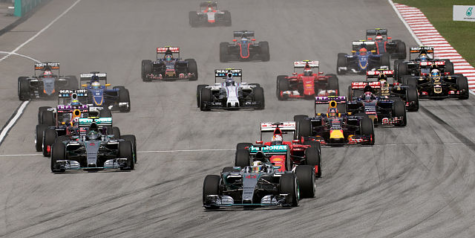
Formula 1 Circuits
The F1 races are conducted on racing tracks called ‘circuits.’ A Formula One circuit is a looped road,approved by the FIA, that serves as a race track fit for F1 racing with the average distance being around 190 miles (305 km).
A circuit usually starts with a straight stretch and has several turns and corners. Most circuits run in a clockwise direction. Few are counterclockwise, and they give drivers the most trouble because of G-force on their necks in a direction that they are used to. One round around a circuit is counted as one lap, and races are usually specified as the number of laps of a particular circuit.
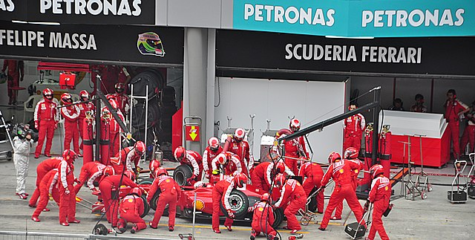
Formula 1 Seasons
A season of Formula One consists of a number of Grands Prix conducted over the course of a year. The F1 season usually starts in March and ends in December. There are 23 venues across the world where the Grands Prix are held. The 2023 FORMULA 1 calendar will feature 23 races, including a debut race at the new street circuit in Las Vegas.
Netflix’s “Formula 1: Drive to Survive” is a 5 season documentary that focuses on each season of Formula 1. It recently released its newest season last month, documenting the 2022-2023 season.
At the end of the F1 season, the World Drivers’ Championship and the Constructors’ Championship are awarded to the winners. The drivers’ championship is decided by the cumulative number of points the driver has accumulated in that season. The constructors’ championship goes to the team with the highest total of the points accumulated by both its drivers during the season.
Does Formula One deserve the hype?
These races appeal to audiences due to how nerve-wrecking they are and the high stakes involved. All it takes is one second for one driver to overcome another, or fall completely off course. The anticipation of seeing the fast maneuvers of each driver and their reflexes on the circuit can lead to an eventful viewing. So next time you feel bored on a Sunday, be sure to check out a Formula One race. You never know; it could be the one to get you hooked.
So next time you feel bored on a Sunday, be sure to check out a Formula One race. You never know; it could be the one to get you hooked.
Aaminah Bukhari is a Copy Chief for ‘The Science Survey.’ Her job is to edit her fellow peers’ articles to help them display their full writing potential....

